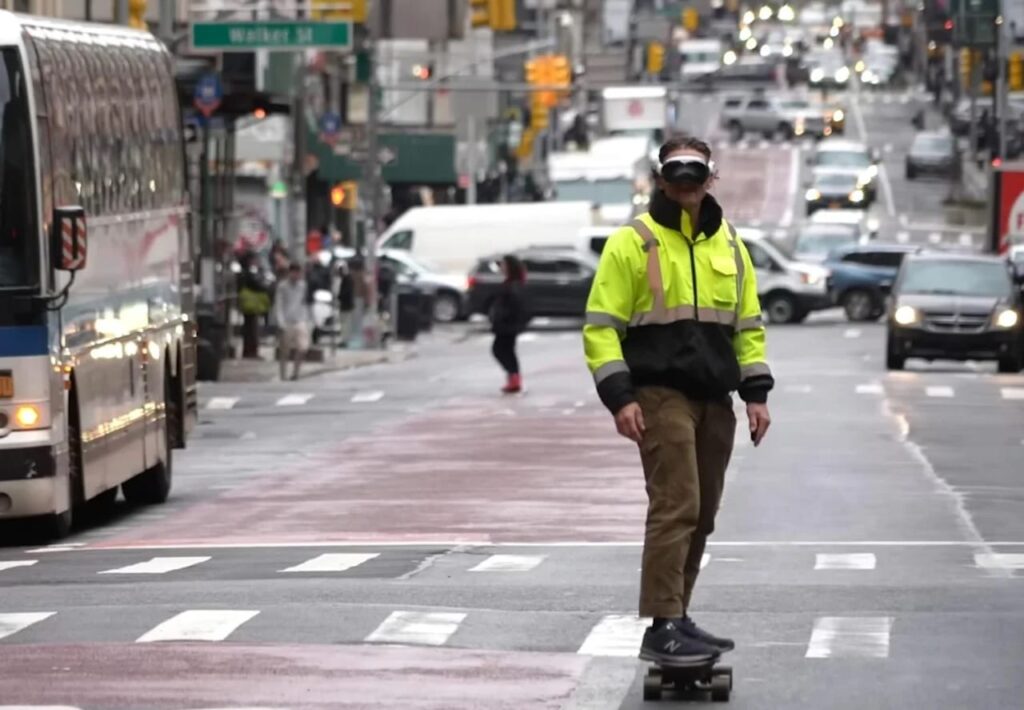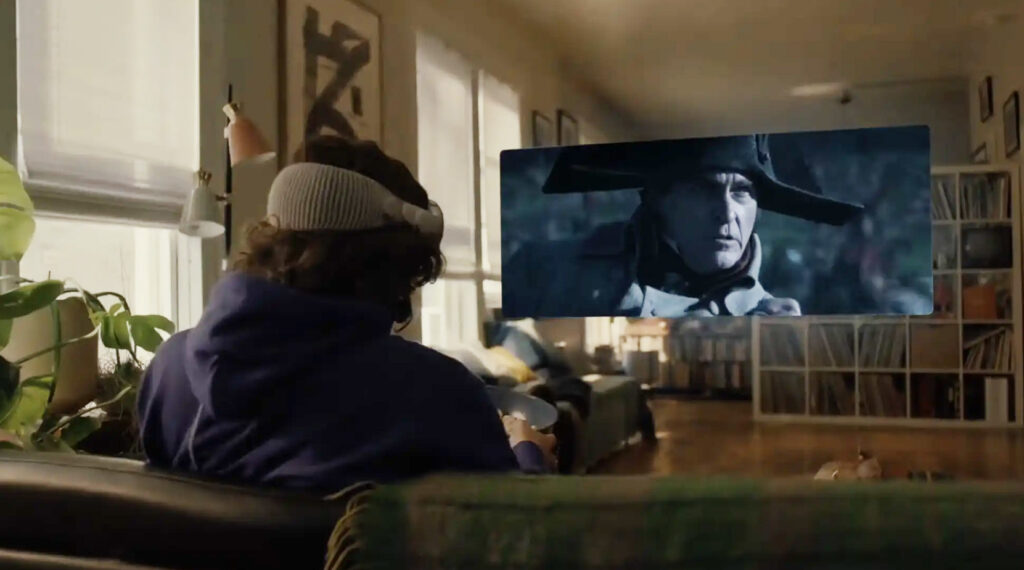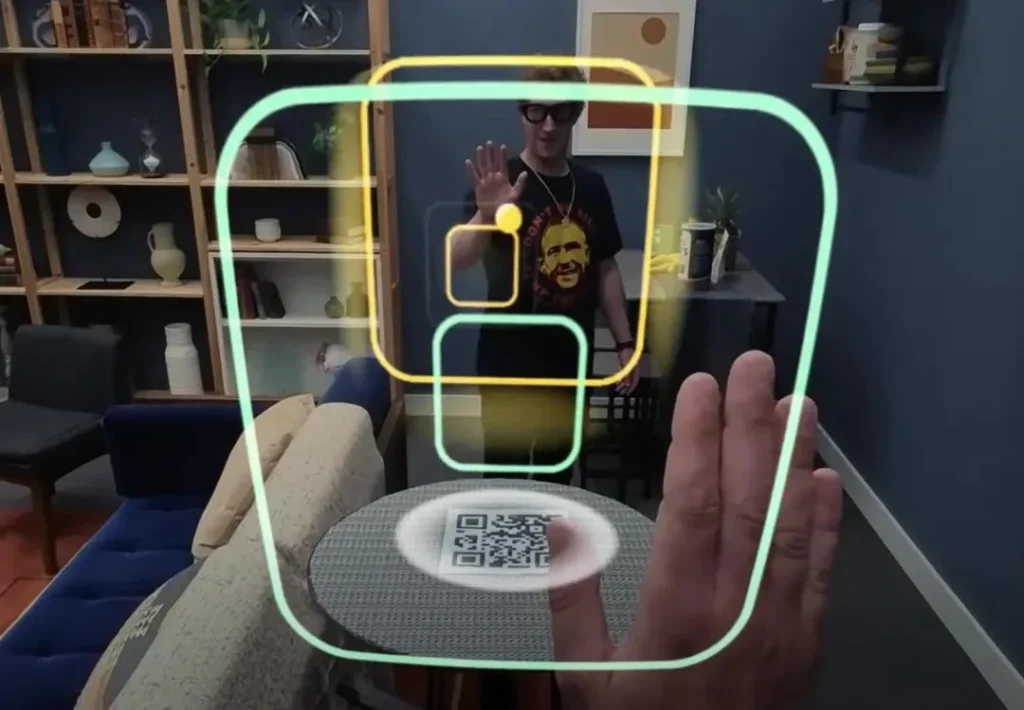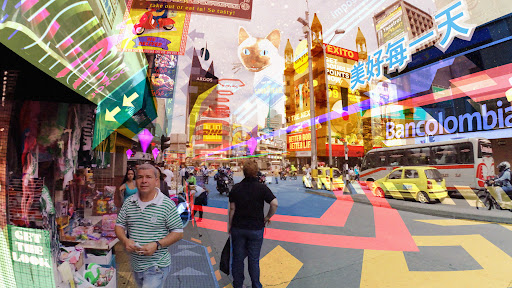Last week I gave a brief overview of how the wearables market emerged, where it’s at now, and where it’s headed. This week, I want to focus in on one specific type of wearable that has enormous potential to change how we interact with our environment and one another: augmented reality glasses. I previously mentioned Meta’s Project Orion, one of the most impressive prototypes of a true-AR device; Snap, the company behind the popular social media app Snapchat, has also unveiled a prototype version of their true-AR Spectacles. While other companies, like XReal, Rokid, and Lenovo, have created lightweight AR glasses, these devices need to tether to an existing device and are mostly geared towards video consumption. So far, the kinds of true-AR glasses that could change everything are not currently on the market, and many of their capabilities are purely hypothetical; however, it is still worth thinking about the ways in which they could come to dominate our society.
While only a wearable in the sense that you wear it on your face, the Apple Vision Pro is perhaps the most similar to a true-AR experience that money can buy. When Apple released the Vision Pro early last year, “Vision-holes” could be seen wearing their headsets out in public, in situations that were often inappropriate and outright dangerous.


There’s clearly excitement around the idea that augmented reality technology is at the stage where we may begin to see it transform our interactions in the real world. The Apple Vision Pro offers an augmented reality experience that is convincing and enjoyable, with a key caveat: users of the Vision Pro are not nakedly looking at the world around them, but are instead looking at the world through cameras; as a result, users have a limited field of view and are seeing a version of their environment marred by potential camera aberrations. The Vision Pro is also not meant to be used for long periods of time, and cannot be used in the wide range of situations where true-AR glasses may be advantageous. However, the Vision Pro – and, to a lesser extent, the Meta Quest 3 – are incredibly impressive devices and are the best examples we have of the enormous strengths and drawbacks of AR. There are hundreds of videos online of people using their mixed reality headsets during everyday tasks, like cooking or cleaning; one viral TikTok video shows a car mechanic with a Meta Quest 3 repairing an engine by referencing a YouTube window floating in space next to them. Anecdotally, the people I know that own Vision Pros use them every day in the same ways that they might use their laptop – browsing, composing, and programming in windows that exist in their physical space. However, these folks also complain about one drawback they can’t shake: the isolation.

Despite being marketed as one of the best ways to enjoy a movie-theater experience at home, the Apple Vision Pro currently does not have any shared AR experiences. While I would love to be immersed in front of an IMAX-sized screen while lounging on my couch, such an experience could not be shared with my partner or my friends and would be quite lonely as a result; the Vision Pro is great for consuming media, if you’re okay with doing that by yourself. In fact, almost nothing you can do on the Vision Pro can be done with another person, even if they’re also wearing one. While Meta has demonstrated how they’re tackling these limitations with their Orion glasses, the isolation that results from AR may be endemic to the technology in some way or another. What is the social consequence of experiencing a reality that is perceptually different from the realities of those that are around you?

Meta, the owner of Instagram and Facebook, appears to be the market leader for true-AR glasses; it may be insightful to use social media as an analog to better understand the future of digitally augmented reality. On social media platforms like Facebook, Instagram, or TikTok, we enjoy experiences that are uniquely tailored to our preferences; algorithms determine the exact kinds of content that will be the most likely to keep us on that platform for as long as possible. As a result, the news and information that such algorithms show us will be more likely to align with our individual world-views. “Echo-chambers” and “rabbit holes” emerge, shifting our perspectives to an even more extreme degree until we can no longer view people holding opposite views from us as even remotely intelligent. Advertisements are often hidden as organic content, subtly suggesting that we buy one product or another; advertisers collect our data without our consent. In a sense, social media platforms already augment our realities until facts and any sense of objective reality become meaningless. I understand this is an incredibly pessimistic view of things. For all its ills, social media also allows us to interact in ways that have never been possible: users can adopt different personas and express themselves in unique ways; they can share their perspectives, information, or art to an audience that may number in the millions or billions, instantaneously.
Social media can be thought of as a “digital layer” on top of our interactions in real life, while the essential point of augmented reality is to create a digital layer on top of our visual environment. In the same fashion as traditional social media, true augmented reality glasses may allow us to engage with new social experiences and develop new forms of artistic expression that would not have otherwise been possible.

Concerningly, however, the wide adoption of augmented reality would also allow the small subset of companies that dominate the market, such as Meta, to dictate what we see and to meaningfully change how we perceive the world around us. What happens when the same algorithms used to carve out our curated online experiences are applied to augmented reality? Could it be conceivable that each individual is shown their own version of the environment around them, curated to their particular tastes? Notably, Meta is widely criticized as being responsible for allowing the spread of a vast amount of mis and dis-information on its social media platforms. The algorithms that facilitate the spread of this information are designed to serve the interests of the advertisers that provide the lion’s share of Meta’s revenue, and it certainly seems like it would be an advertiser’s wet dream to have every empty wall you pass by become a potential ad space.
It is no accident that the two most compelling prototypes of true-AR glasses were designed and produced by social media companies. On social media platforms, socialization and isolation are often two sides of the same coin; the platforms that were perhaps originally designed to connect us often end up separating us into echo chambers. Current versions of augmented reality devices like the Vision Pro are already quite isolating; I would argue that it might be equally as isolating if my friends and I were able to watch movies together in our AR glasses, but saw different murals and and ads on the buildings we walk past on the street. At the very least, I’m not convinced that Meta, the original architect of some of our most dysfunctional online information environments, is the most trustworthy company to usher in this future.
True-AR glasses have the potential to become the “smartphone killer,” but they may also become the “everything-with-screens killer”; after all, who needs a laptop or a TV when you can conjure a virtual screen of any size and place it wherever you would like? As a result, these devices may dominate our perception to an even greater extent than smartphones already have. As a society, we are still grappling with the impacts that smartphones have had on our attention spans, our mental wellbeing, and our ability to be present in our everyday lives. True-AR glasses will almost certainly produce similar, potentially more intense consequences, so it is crucial that we take the time now to think critically about the implications of integrating these technologies into our daily lives. By learning from the negative consequences that have emerged from the evolution of social media platforms, we can better prepare to live in a more digitally augmented world.

Leave a Reply